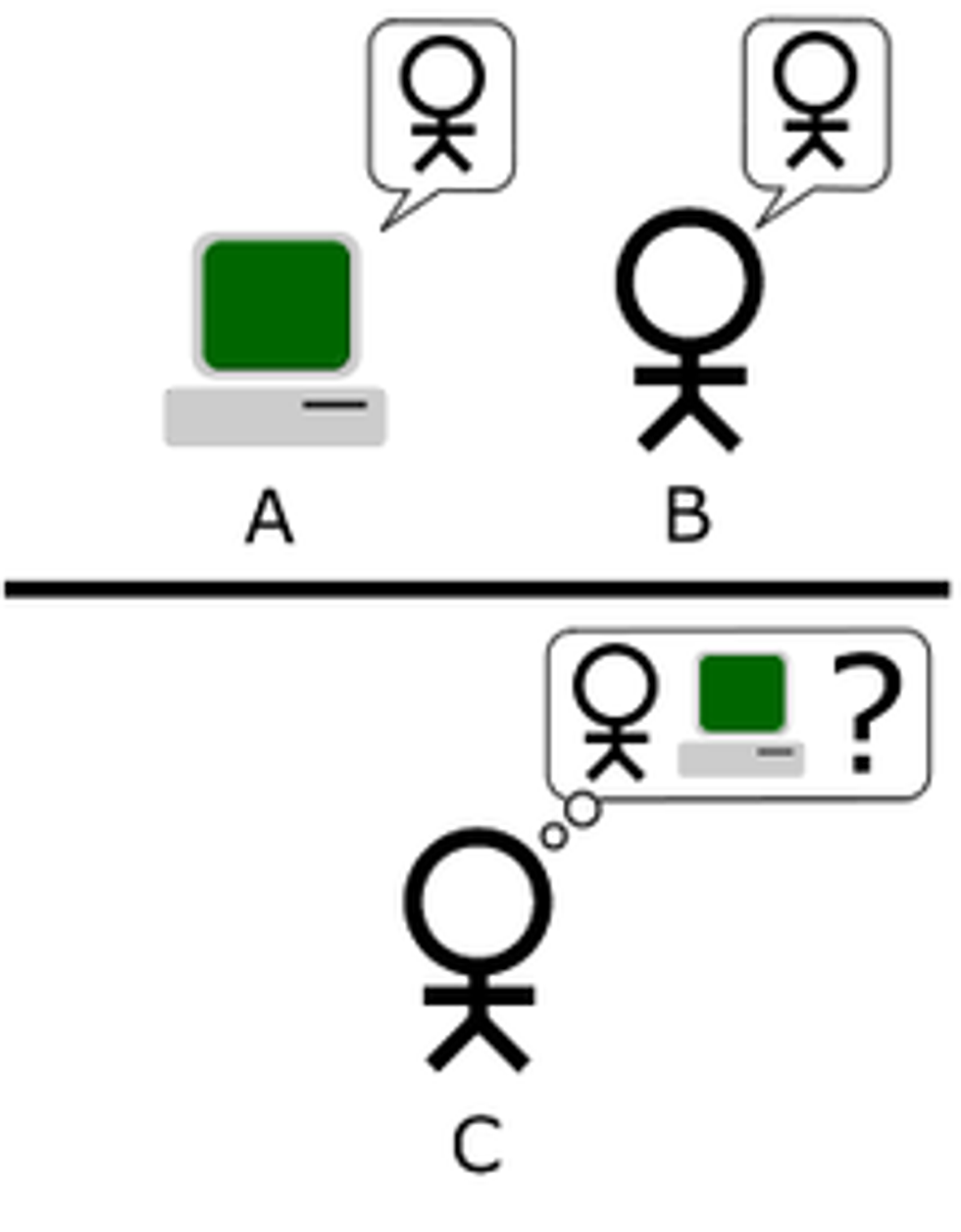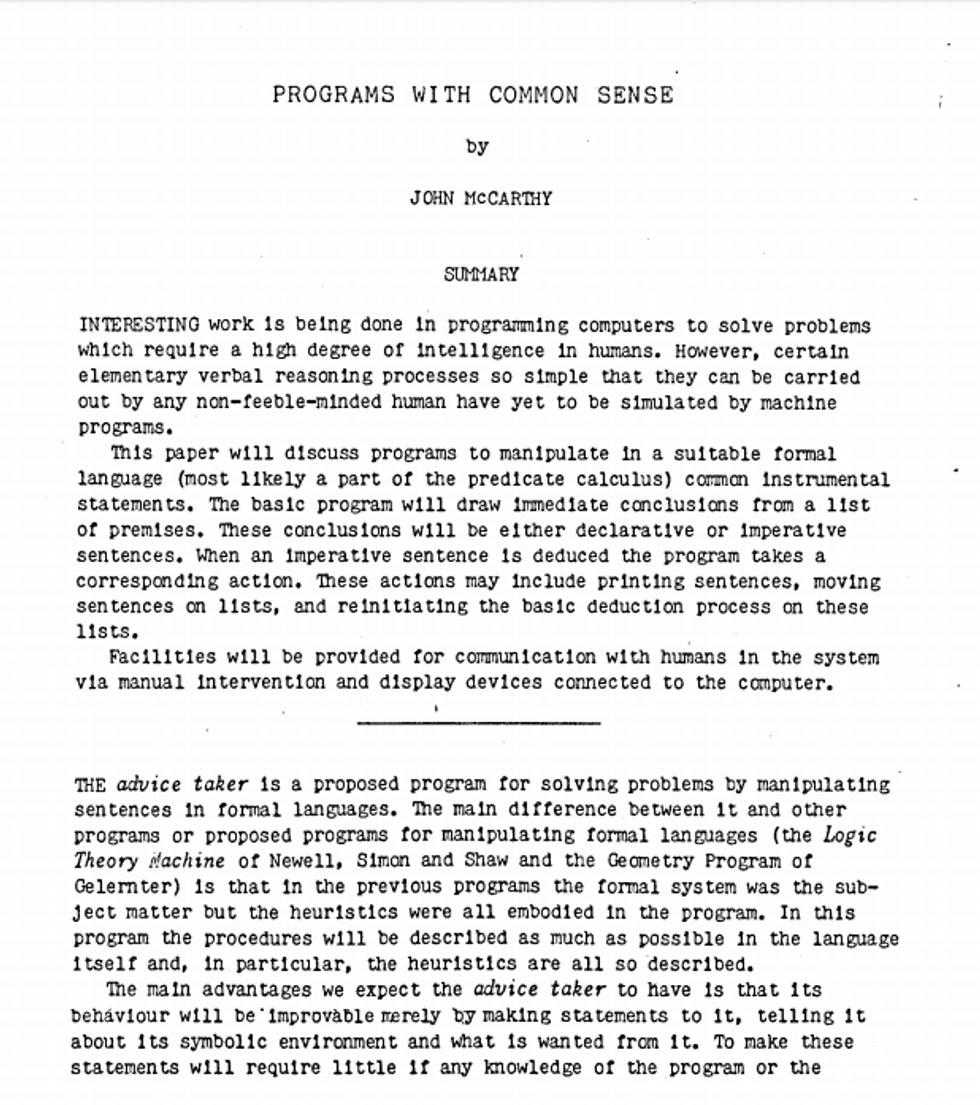Artificial Intelligence or AI is defined as “the simulation of human intelligence processes by machines." The processes include learning, reasoning, and self-correction. Learning is the act of obtaining information and the rules for using that information. Reasoning is using the rules to reach a conclusion, and self-correction is the act of figuring out what went wrong and how to avoid the same mistake in the future.
The Beginning of AI:
Artificial Intelligence (AI) isn’t a new concept, even in Greek mythology there were stories of intelligent robotics built by Hephaestus, the Greek god of technology. Talos was a giant animated bronze warrior programmed to guard the island of Crete created by Hephaestus. The ancient writers described him as what seems to presage today’s scientific “cybernetic organism” project that combine neurological-computer interfaces and living and nonliving components. Talos as well as many of Hephaestus’s projects were mechanisms that were able to think and feel. They acted as if they were alive, and often appeared to be, if it weren’t for the fact that they were made out of metal.
This tells us that the ideas for artificial intelligence predate the technology that enables AI, technology such as El Ajedrecista. It wasn’t until 1915 that Leonardo Torres y Quevedo built the chess automaton El Ajedrecista. He built it to prove his theory that machines could do what we classify as thought by completing a game of chess against a human player. The chess player was fully automatic using electrical sensing of the pieces on the board. It could deliver mate with King and Rook against King regardless of the initial positions of the pieces on the board.
Development:
Alan Turing was a British mathematician and WWII code-breaker. In 1950 he proposed the Turing Test as a measure of machine intelligence and it is still used today to determine a machine’s ability to “think” like a human. What he proposed was an “imitation game” in which a person and a computer are asked the same questions and a second person acts as the interrogator, asking the questions without knowing which is the person and which is the computer. The interrogator has to read the answers the computer and the person type and try to determine who is the computer. Turing said that if the interrogator couldn’t distinguish between them simply by the answers given then we could call the computer intelligent as it “thinks” and answers like a person. Turing's 'imitation game' is now usually called 'the Turing test' for intelligence.
The term “artificial intelligence” wasn’t used until after 1956 so it was not including in Turing’s paper or research. It was coined at the first Dartmouth College summer AI conference by John McCarthy. The conference was filled with many of the leading researchers in a wide range of advanced research topics to discuss the subject that didn’t yet have a name but would be known from then on as Artificial Intelligence. This was the largest gathering on the topic and it laid the foundation for the field and several others such as engineering, mathematics, computer science, and psychology.
McCarthy was one of the people responsible for setting up the conference so it makes sense that he continued study in the field. A few years after the Dartmouth conference, McCarthy presented a paper at the Teddington Conference on the Mechanization of Thought Processes in 1958. His paper was titled Programs with Common Sense and it described a thinking machine he calls the Advice Taker. This hypothetical computer program was the first proposal to use logic to represent information in a computer and not just as the subject matter of another program and may have been the first to propose common sense reasoning ability as the key to artificial intelligence.
McCarthy’s paper is one of many that may have been found in Edward Feigenbaum and Julian Feldman’s book Computers and Thought. It was the first compendium of artificial intelligence research and was originally published in 1963. It includes twenty classic papers by scientists such as Alan Turing and Marvin Minsky. Some of the articles discussed computer programs that could play chess and checkers, prove theorems in logic and geometry, solve problems in calculus, balance assembly lines, recognize visual patterns, and communicate in natural language, all things we would declare as intelligent. They also talked about the simulations of cognitive processes that imitate human behavior such as social interactions.
Examples of AI:
In 1963, Thomas Evan’s program ANALOGY demonstrated that computers can solve geometric-analogy problems frequently found on intelligence tests. There is a group of cards with shapes on them the questions states something similar to “figure A is to figure B as figure C is to which of the given figures?” as shown above. In order to answer the question ANALOGY processes the representation of line drawings into subfigures, calculates the relations between the figures and attempts to match the patterns.
In 1964, Project MAC (Multiple Access Computer and Machine Aided Cognition) shows that computers can understand natural language enough to solve algebra word problems. It was founded with the goal of developing a computing system that would allow more computing power. The result was time-sharing and a new paradigm of interactive computing which is used for software systems today.
Joseph Weizenbaum grew skeptical of artificial intelligence after creating a program that simulated a conversation between an empathetic psychologist and a patient, this being the user. ELIZA was the first instance of what we call today a chatterbot program. Many of the users took the bot seriously and treated the talk as they would a real sessions with a psychologist, Weizenbaum was shocked and this lead him to question the philosophical implications of artificial intelligence and eventually become a critic that wrote a paper saying that machines should not be allowed to make human decisions.
From 1966 through 1972 Stanford Research Institute (SRI) conducted research to create “Shakey” a mobile robot system. It was able to perform tasks that required planning, route-finding, and the rearranging of simple objects and led to many advances in AI techniques. It was featured in the New York Times with two other robots after its demonstrations were made public by a short film entitled “SHAKEY: Experimentation in Robot Learning and Planning."
Recent Technologies:
The 1990’s brought major advances in all areas of AI. In 1993, Ian Horwill extended behavior-based robotics by creating Polly, the first robot to navigate using vision and operate at animal-like speeds. That same year, Rodney Brooks, Lynn Stein, and Cynthia Breazeal started the MIT Cog project in an attempt to build a humanoid robot. As stated in the FAQ section of the Cog website, it is one of a kind and cannot be bought, however there is an AI that can be. Tiger Electronics’ Furby became the first successful attempt at producing AI for the domestic environment. The toy spoke in it’s own language but began to introduce English phrases in order to mimic the process of learning a new language. Other “smart toys” such as interactive robopets didn’t become commercially available until 2000, the same year that Cynthia Breazeal published her dissertation on Sociable machines including Kismet. Kismet shows emotion through facial expressions and attempts to communicate in a natural manner.
In 2011, Apple’s Siri, Google Now, and Microsoft’s Cortana were sold to the general population, now there isn’t a smartphone without one of these apps on it. They use natural language to answer questions, make recommendations and perform actions as directed. Siri is well known for jokes and sarcasm, some might say this is her personality even though she is a computer program.
One of the current projects at MIT is Leonardo. Leonardo is a social robot whose expressiveness arises from maintaining eye contact, moving his eyes, mouth, ears and arms and it actually shows a wide range of expressions. Leonardo has an organic appearance but is clearly not trying to look like any living creature today. This is because the creators believe that robots are their “own kind of creature.” Leo expresses emotions through facial movement and body language.




























